For the past two weeks, I’ve been spending my nights playing Overwatch 2 matches with other games journalists across the industry. And no, I haven’t been playing all those matches just because I’m a studiously thorough reviewer. Overwatch is back, and it’s really fun.
For the completely uninitiated, Overwatch is a Blizzard first-person-shooter franchise that pioneered the contemporary hero shooter model. In hero shooters, players choose a specific character with a unique ability kit equipped with items and moves based around supportive, offensive, or defensive roles. Overwatch merges traditional class-based FPS mechanics (think Team Fortress 2) with multiplayer online battle arena tactics (like League of Legends or DOTA). To complete a set of map-based objectives, players group together and engage in team fights, picking off high-value targets on the frontline in order to maintain control points or escort payloads to their destination.
Overwatch had its fair share of competitors at the time, including Gearbox Software’s ill-fated Battleborn and Hi-Rez Studios’ far more competent Paladins: Champions of the Realm. But Overwatch remains the shining star of the genre six years later. Its heroes are easy to learn, but difficult to master, with an enormously high skill ceiling further cemented through the game’s competitive ladder.
Blizzard has reworked the original Overwatch formula for Overwatch 2, knocking out the sixth player from each team and reworking the role queue. This changes everything: There’s no dual tanks anymore, as every team has two damage heroes, two supports, and one tank. Team fights are higher risk, higher reward ventures now, where landing the right kill at the right time can turn the tide in your favor—and getting headshotted by a Widowmaker can screw your whole team’s play over, as happened to me quite a bit during my review period. Curse you, Battle.net user eggtart.
The biggest 5v5 change comes to tank players. Tanks need to learn how to play both active and passive roles now, leading charges to the point, then peeling off to punish enemies that have strayed a bit too far past the frontline. As a D.Va main, this took some getting used to when I played the Overwatch 2 beta in May, and I didn’t quite have it nailed down until the tail end of my review session this fall.
Even with a solid team supporting me, I still found myself relying on bad habits from Overwatch 1: Overusing my Defense Matrix and letting damage hit my team, straying too far off from the group fight only to get targeted and demeched, and dropping D.Va bombs without strategizing pushes with the rest of my team. I could play D.Va passively in Overwatch 1, deferring to the calls of a Reinhardt or Sigma. But the sole tank is the de facto leader of Overwatch 2 now, so if you pick the role, get ready to call the shots.
As you can guess, Overwatch 2 is a much more competitively oriented game now, even more so than its predecessor. Without that sixth teammate for support, every single hero has more responsibilities on their shoulders. And the butterfly effect is real in Overwatch 2 fights. I’ve thought back on some of the sweatiest, most difficult matches I’ve played during the review session, and I can still pinpoint the exact moment where one of my own actions contributed to our loss: a Tracer Pulse Bomb at the wrong moment, a D.Va self-destruct that could’ve been held to contest a payload, an Ana sleep dart that just missed its target, the list goes on.
Of course, the inverse is now true, too. When you kill a high-value player, you can really bask in the glory of turning the tide. And when your ult pops off, it really pops off.
Some of the old, some of the new …
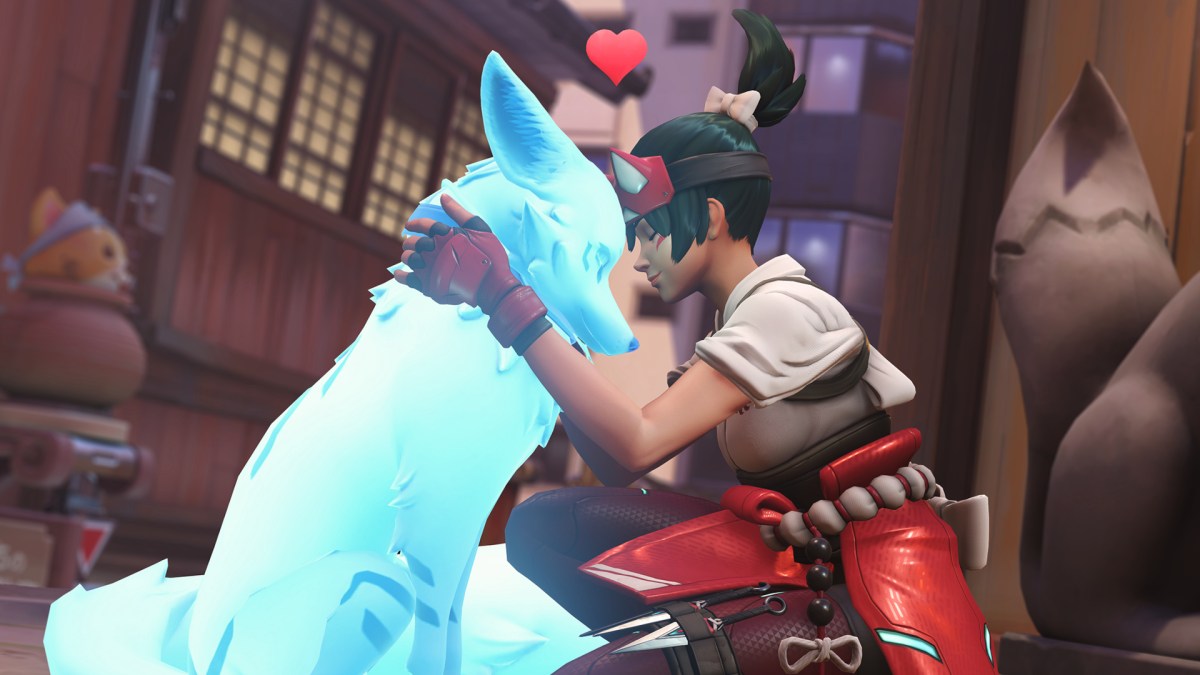
There are two other major changes that have come to Overwatch 2. The first, and most exciting, is its three new heroes: Sojourn, Junker Queen, and Kiriko. I’ve gotten extensive time testing all three during the review period, often against some incredibly skilled players, and I’ve found each brings a badly needed fresh breath into Overwatch.
Sojourn is Overwatch’s first Black female player character, an advanced cyborg soldier core to the titular Overwatch initiative in the game’s lore. Gameplay-wise, she’s a railgun-touting DPS that chips away at frontline damage to build up an incredibly powerful projectile shot that can obliterate squishier enemies. Her ultimate auto-charges her railgun projectile, letting you completely wipe out some of the opposing team’s support and DPS—so long as your aim is up to the task. She’s incredibly powerful, very well written, and just ridiculously fun to play.
Junker Queen is similarly a welcome addition. She joins the roster as one of the game’s few female (well, human female, anyway) tanks: a big, buff, punky Australian woman who leads the game’s Mad Max-esque Junkers, the same group that Junkrat and Roadhog hail from. She’s a close-range tank that can throw a magnetic knife at her enemies, knocking them out of position and straight toward her clutches. Give her feral Commanding Shout to boost you and your allies’ health and speed, and use her Rampage ultimate to initiate team fights. She’s a versatile brawler that can tank massive amounts of damage in the right hands, making her fantastic for leading contested payloads and control points.
She’s also a ridiculously hot queer-coded baddie, which, per the screenshot below, speaks more than words could ever.
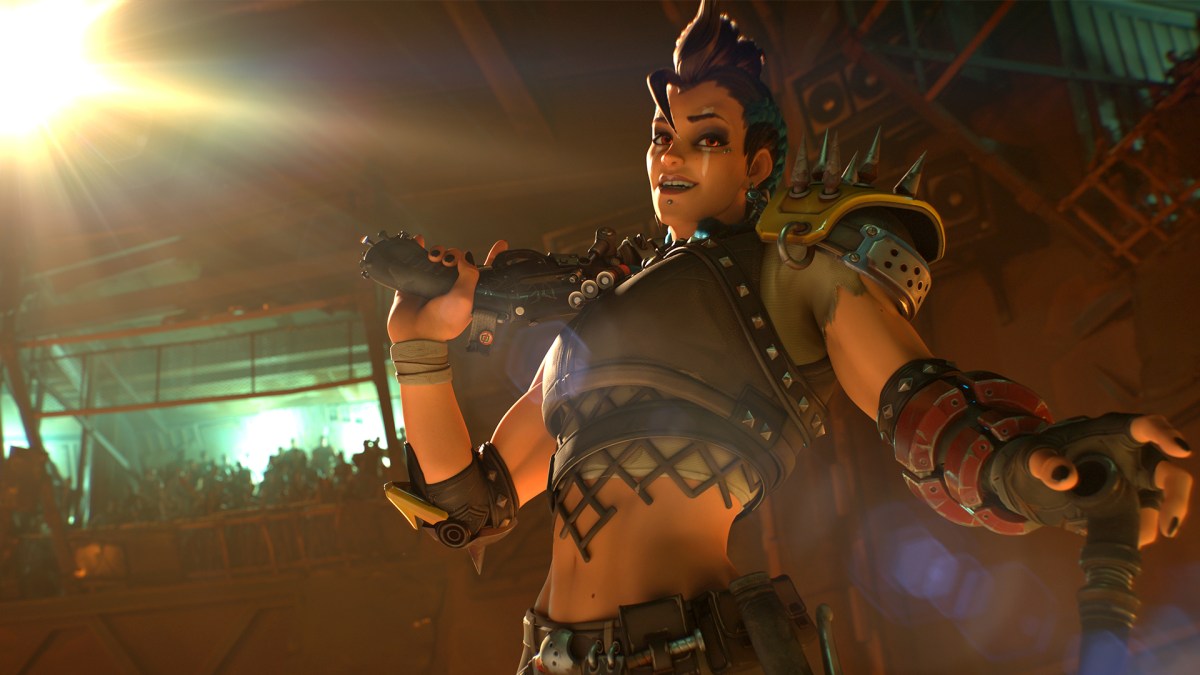
But my favorite addition by far is Kiriko, a Japanese ninja healer who can drop a Kitsune spirit as her ultimate, giving her team a buff on movement and attack speed as well as ability cooldown time. Kiriko is incredibly versatile. She can heal allies at a distance with her ofuda papers, flee from danger by teleporting to teammates, and can even nail headshots from afar with her kunai attack. The best part of Kiriko’s kit is easily her Protection Suzu, a grenade that shields allies from harm and drops any negative buffs on them, such as Ana’s anti-heal grenade. She’s an incredible support and extremely dangerous in the right hands, as Overwatch YouTuber Bad Pachimari revealed in this YouTube video demolishing me and several other games journalists.
Each of these heroes adds something new to Overwatch 2‘s matches, letting teams create new strategies to their matches without breaking the core game mechanics. They feel right at home in Overwatch 2’s tight 5v5 gameplay, skillfully balancing their role’s numerous responsibilities.
… with some of the bad
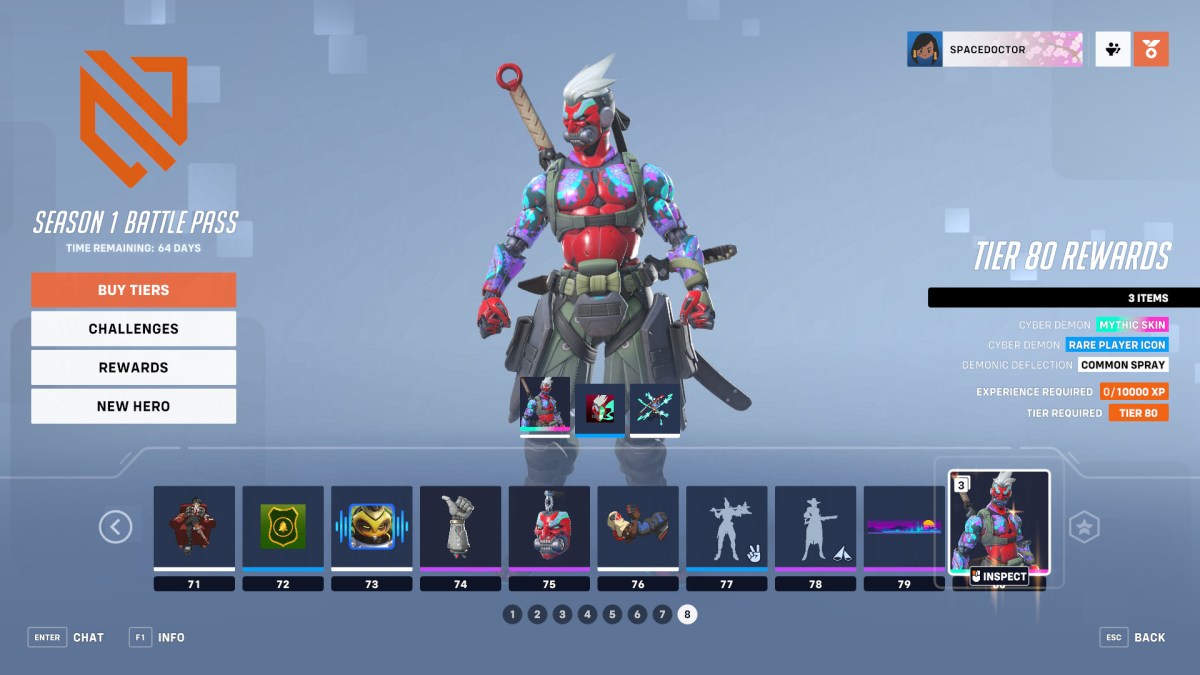
The new heroes shake things up in Overwatch 2, but I won’t mince words here. The Battle Pass system sucks.
Loot boxes are no more in Overwatch. Instead, players unlock cosmetics across an 80-tier Battle Pass system. Each tier costs 10,000 XP to unlock, and you can gain XP from completing matches and beating daily, weekly, seasonal, and lifetime challenges. This wouldn’t be a problem, except Kiriko, the game’s best new hero, is gatekept within the Battle Pass. You either need to grind for her, or pay $10 for the premium Battle Pass.
To give you an idea of just how laborious the free Battle Pass is, as of this article’s writing, I’ve done approximately nine days’ worth of open queue quick play matches, two hours per day. I’ve queued up with my colleagues at Dot Esports, which gives a 20% XP bump, and I have the premium Battle Pass’ additional 20% XP boost. Some of the custom games I’ve played with my colleagues may have contributed to my final tier result, as some challenges can be completed via custom games.
Approximately 18 hours of open queue playtime in, and I’m just about to unlock tier 30. Kiriko doesn’t unlock until tier 55. I asked my colleagues at Dot Esports for their take on how long it would take to earn Kiriko if you’re a free player, and their prognosis is grim.
“If you complete the daily challenges every day, that’s 9,000 [XP]. If you complete all of the weekly challenges and every daily challenge for seven days, that’s about 118,000 XP,” Dot Esports reporter Emily Morrow told me. “Kiriko’s on level 55, so she requires 550,000 XP. If you only do daily and weekly challenges, it would take almost 4.7 weeks of playing. Adding in seasonal challenges will probably speed it up a little. That assumes no XP boost and doesn’t include the small amount of XP you get for playing every game, so it would probably be slightly shorter.”

Yeah, the grind is that bad. Overwatch 1 players get Kiriko for free, granted, but for newcomers who can’t afford the price, it’s completely unfair to force multi-week play just to earn a new hero. If this is a sign of things to come, expect to either cough up a couple bucks, or squeeze out over 30 hours to unlock a new hero. It’s ridiculous and sets a pay-to-play precedent that isn’t healthy for the series.
Beyond the Kiriko-Battle Pass woes, the new Battle Pass comes with 20 free tiers, and the rest save for Kiriko are locked under the premium Battle Pass. You can purchase skins and shop bundles through Overwatch Coins, which come at a conversion rate of one cent for one coin. Some additional coins are added in for buying more currency at once, and you can also earn coins by completing weekly challenges. A Kiriko Legendary cosmetic bundle will run you about $20, and you can also unlock Battle Pass tiers at 200 coins per (or $2 per tier).
Kiriko aside, the whole system is what it is. It’s no different than competitors like Valorant. But I’m already starting to miss the loot box system: level up, get loot, rinse and repeat. The Battle Pass approach feels a bit money-hungry, even if Overwatch 2 needs a new monetary system to make up for its free-to-play shift.
And some of the ugly
Battle Pass concerns aren’t the only thing on my mind. Overwatch 2 adds a ton of new voice lines to the game, including several interactions between old and new heroes. But despite all the hard work that’s gone into Overwatch 2’s narrative design, we still haven’t seen a third queer playable character.
Tracer was confirmed as a lesbian in 2016, and Soldier: 76 was revealed to be gay in 2019. It’s been three years since then, which means we’re right on track for another reveal. So, who’s next? Where are they? Overwatch fans are getting tired of waiting. Years ago, we were already demanding more than just scraps, and the most we got out of Blizzard this week was a flirtatious Pharmercy line. Blizzard is very, very late to the table on making its characters more explicitly queer. Riot, in comparison, has one of the most popular F/F ships in gaming all over Netflix.
Then there’s Activision Blizzard itself. The past two years have been filled with endless reports on sexual harassment and labor violations at the company, and the shadow of those allegations hang low over Overwatch 2. Problems seem to stem from the very top at Activision Blizzard, as CEO Bobby Kotick was reportedly aware of both sexual harassment cases and a rape allegation within the company, yet he hid this information from the Activision Blizzard board, per a 2021 Wall Street Journal report.
While some Activision Blizzard employees are pushing for better work conditions for marginalized genders within the company, things aren’t changing easily. In May, an anti-discrimination group formed, with one QA tester claiming Activision Blizzard has merely “given us the most basic of improvements and it feels like we have fought for those tooth and nail.” Further requests include a proper PTO and compensation policy for parental leave, privacy, and support for breastfeeding employees, and better trans rights policies at the company, including removing deadnames from internal software.
I can tell a lot of hard work from wonderful people went into Overwatch 2. I’m friends with some past and present Blizzard employees, and there are indeed good people that have left their fingerprints on this game. But no work of art is created in a vacuum. Every dollar spent on Kiriko skins is a dollar paid toward Activision Blizzard, and every concurrent player is a sign of investment in the company’s product. This product is, sadly, bigger than those few good developers.
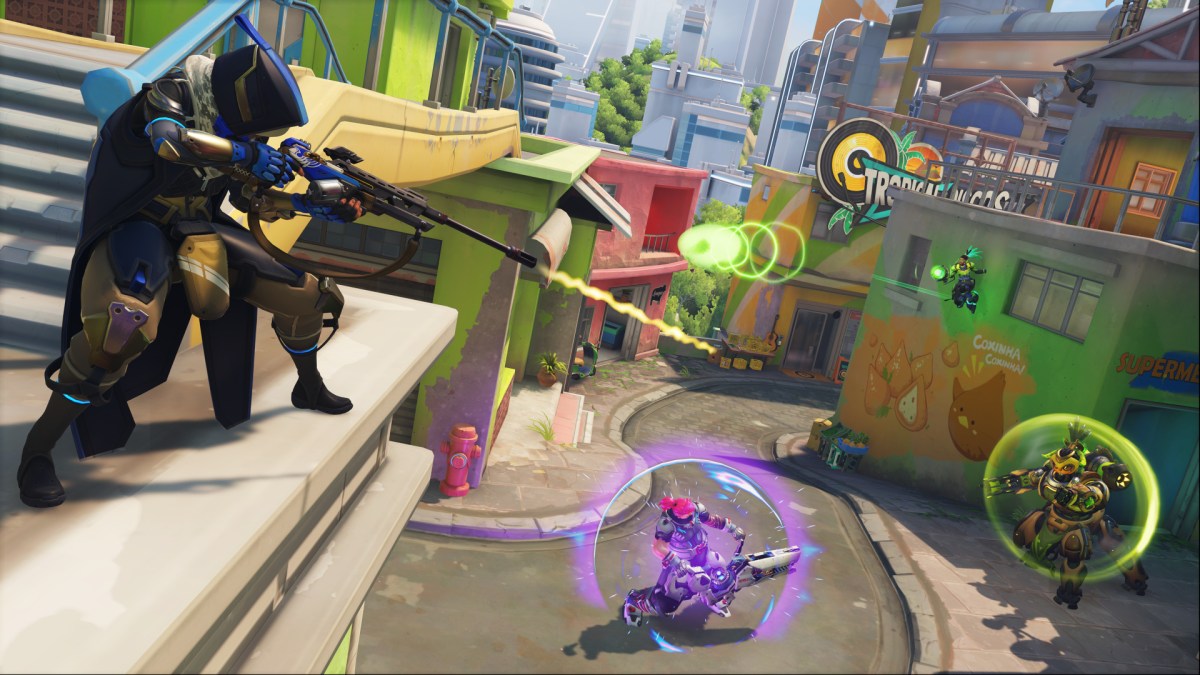
For many players, nothing can bring them back to Overwatch, no matter how many nifty new heroes are added in. That decision is not just an understandable one, but it’s one that I expect many longtime fans to make. Hell, the company is still being sued at this very moment, and instead of vowing to do better, the company has downplayed the numerous lawsuits against it. Positive press reporting on Overwatch 2 can work to sanitize Activision Blizzard’s image, and I expect ex-players to criticize reviews, guides, and news coverage on Overwatch 2 that doesn’t mention these allegations.
Those criticisms are legitimate ones, by the way. They are conversations every games journalist should be having, and I welcome them toward my own reporting. If to play a game is to vote with your time and money, then to review it is to give it a platform.
So yes, I’ve enjoyed my time in Overwatch 2, and I think it’s a fun continuation of the original game. Everything that makes Overwatch 2 incredible is worth highlighting and praising. But I can’t recommend others play Overwatch 2. Not quite yet. There’s still so much work to be done changing the workplace culture at Activision Blizzard, and until those changes are made, I feel uncomfortable using my platform as a writer and reporter to endorse it.
If you want to pass up your support for Overwatch 2 until you have full confidence that Activision Blizzard has changed for the better, know that there’s a wonderful game waiting for you when better days arrive. But if you choose to never touch Overwatch 2, I wouldn’t fault you for it in the slightest. The cost is way too great, and I don’t just mean monetarily.
(Featured image: Blizzard Entertainment)



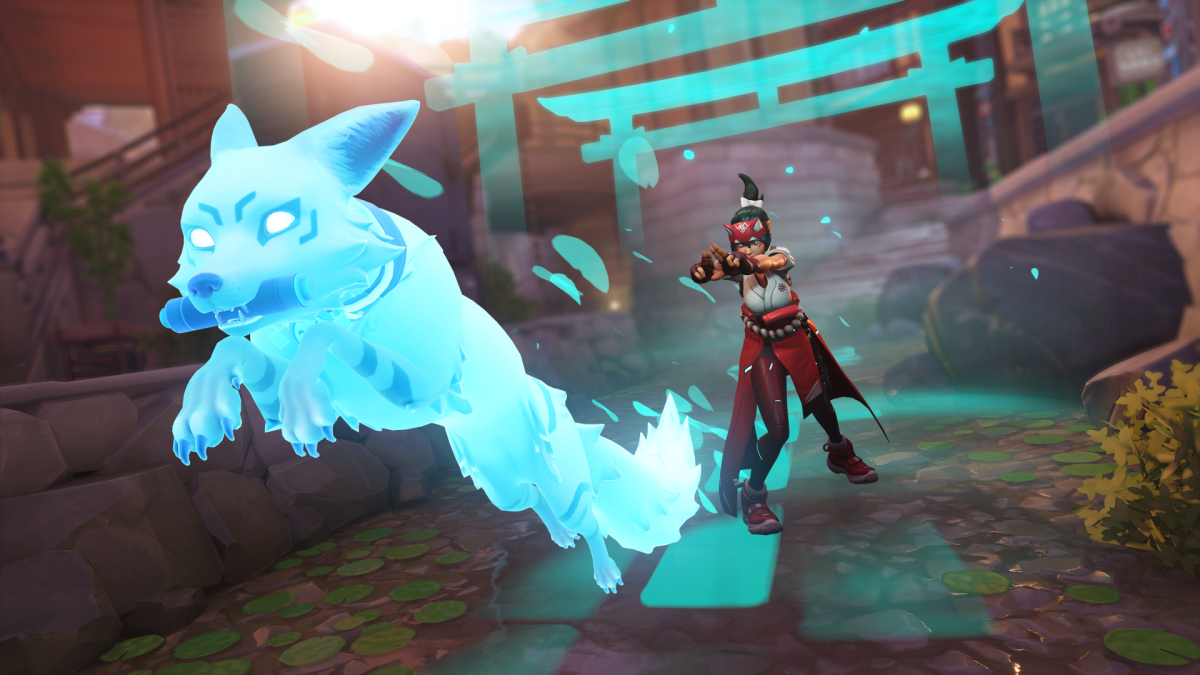





Published: Oct 4, 2022 05:41 pm